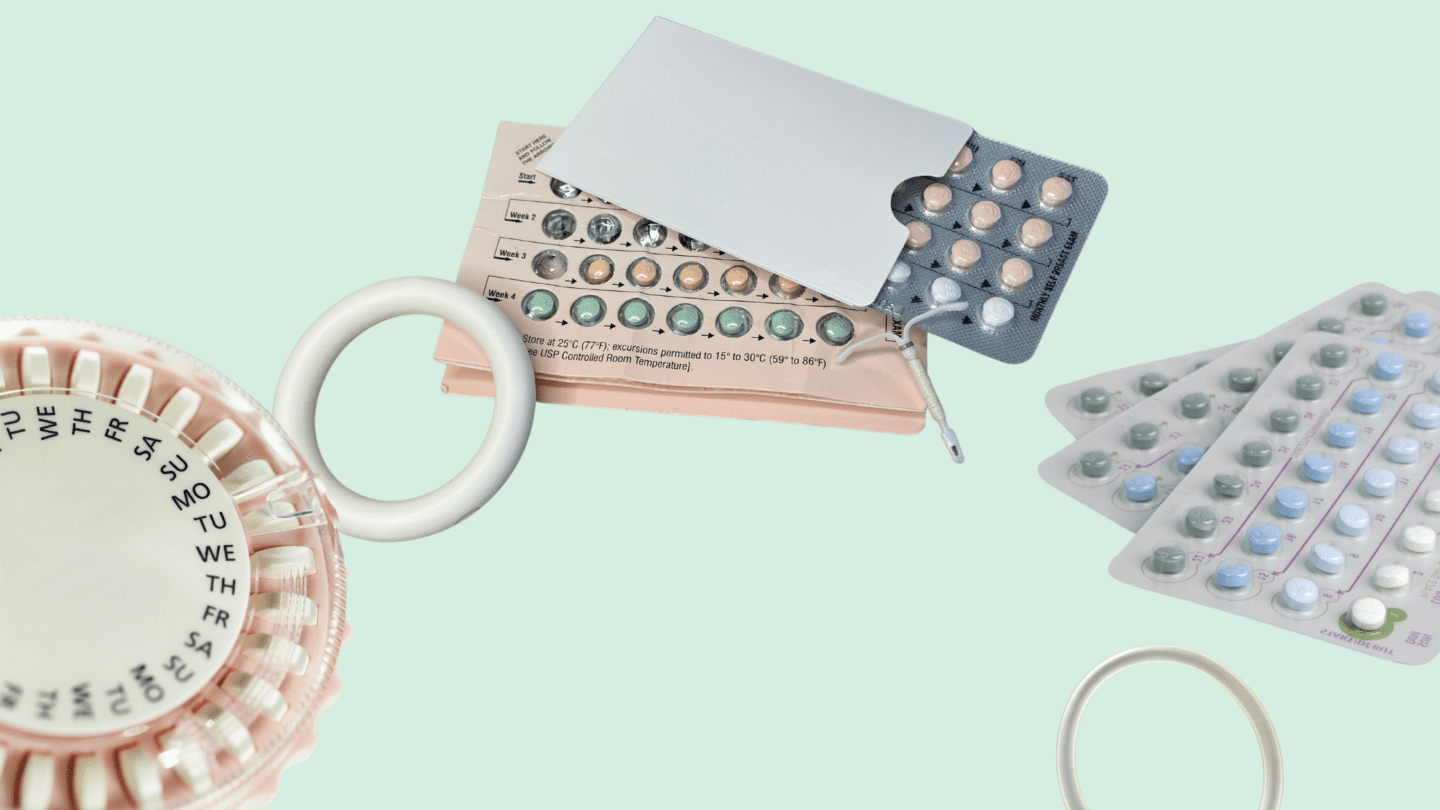The vaginal birth control ring — or, “the ring” — is a popular option for many people seeking . You insert this flexible ring into your , where it releases a small daily dose of hormones to prevent pregnancy.
The ring is easy to use, and, unlike the pill, you won’t need to remember to take something every day. But there are some extra side effects to birth control rings that mean they’re not always right for everyone.
There are a few birth control ring options to pick from, including Annovera, NuvaRing, and Eluryng. They’re broadly similar, but each has some slight differences that can matter for your individual body. That includes the type of hormones the ring contains, how much of them it releases, and how often you need to change the ring out. Eluryng is the generic version of NuvaRing, which means its formulation and instructions are the same, but it might be available at a lower price.
Vaginal birth control rings are between 97% and 99% effective1 if used properly, depending on the brand.2 They come with many of the same precautions as other forms of hormonal birth control, but there are a few specific side effects to think about. Rings are proven and effective for most people, but it’s still best to check with your doctor first.
If you’re thinking of starting to use a birth control ring or have questions about the one you’re using, you’re in the right place. We’ll run through what they are, how they work, and what you need to know before choosing a ring.
Is adyn right for you? Take the quiz.
How do vaginal birth control rings work?
Birth control rings like the NuvaRing and Annovera are made of a soft, bendable plastic (they don’t contain latex), that you easily insert by hand into your . Roughly resembling your average ponytail holder, the rings are loaded with two hormones, a and an , which they gradually release while inserted.
The and the prevent pregnancy by stopping your body from ovulating. They also make it harder for sperm to swim and change the lining of the womb. So if an egg is released, it would have a difficult time attaching itself. It kicks off the same hormonal chain reaction as birth control pills and other hormonal forms of .
But rings do have an advantage over the pill in that they release their hormones directly to reproductive organs. That means rings can consistently release smaller amounts of hormones into your body to get the job done. By contrast, hormones from the pill must travel through the gut, where they’re partially broken down by the liver. So the pill has to deliver higher levels of hormones to your body to get the job done.
Birth control ring benefits
Vaginal rings have all the same benefits that birth control pills do: They’re highly effective at preventing pregnancies, and they can reduce heavy or irregular menstrual bleeding, symptoms of premenstrual dysphoric disorder and acne, among other things.3 And unlike the pill, which you need to remember to take daily at roughly the same time, you only need to replace your ring once per month. But for some people, all types of come with side effects, including changes to menstruation, unscheduled bleeding, headaches, nausea, and a higher risk of blood clots and high blood pressure.
There are also some downsides unique to the ring. Some people report they can often feel it throughout the day, though it’s not always disruptive. There are also a number of side effects found more commonly with the ring than with other types of , including vaginal discharge, irritation, and vaginitis, or an inflammation of the .4 One of the reasons for that is that some strains of vaginal yeast grow more easily on the ring, increasing the odds of an infection.5 Rings can also fall out,6 especially during sex or bowel movements.7 If that happens, or if you choose to take the ring out during sex, you can put it back in yourself8 (after a thorough rinse).
For many people, the side effects can be a worthwhile tradeoff for the ease of use that birth control rings offer — but not for everyone. For example, some studies find that more people stop using the ring because they don’t like the extra side effects9 when compared to birth control pills.
How to use a birth control ring
Birth control rings are made to be user-friendly — you put them in and take them out yourself at home⁷. To do it, just pinch the sides together and simply slide the ring into your . It should sit near the top of your near the cervix, though the exact position doesn’t matter. To take the ring back out8, hook a finger through it and pull it out.
If you’re switching from a different form of hormonal birth control, you can switch to the ring at any time⁷. For those who weren’t using hormonal birth control, the startup instructions vary a bit from ring7 to ring,8 but most recommend inserting it between days two and five of your cycle. To be safe, you should use another form of for the next seven days.
You’ll leave the ring inside your for three weeks and then take it out during your “period” (withdrawal bleed) week. Then, depending on the brand you’re using, you’ll either put in a new one, or wash off your current one and put it back in.8
If the ring does fall out, you can put it back in. Make sure to wash it off8 with warm or cold (not hot) clean, soapy water first, and dry it off. Then, just insert it as you would normally.
If the ring has been out of your for more than two or three hours, though, the instructions are different. That’s long enough that you might not be protected from pregnancy, so you should plan on using another form of until the ring has been back in place for at least seven days.8
Although you normally will have taken the ring out to trigger your withdrawal bleed, it’s completely fine to use tampons while you have a ring inserted. A study from 2004 of people using the NuvaRing found tampon use didn’t change the levels of hormones in their bodies at all.10
Annovera vs. NuvaRing
Your options for birth control rings are all fairly similar, but there are some small differences. One is the formulation of hormones. Annovera, NuvaRing, and Eluryng all use the same kind of , , but their s differ. Annovera contains a called segesterone8 while NuvaRing and Eluryng use etonogestrel.7
The amounts of each in each ring are slightly different as well. NuvaRing and Eluryng release slightly more of their each day than Annovera, but slightly less of their .8 The differences are small, but we know that people’s bodies respond to hormones in different ways. The slight variations in formulation and amount could change the side effects, if any, you get from your .
You also swap out some rings more often than others. You’ll insert a new NuvaRing or Eluryng every month, but you use the same Annovera ring for a full year.
The Annovera ring is 97% effective with perfect use, while the NuvaRing is 99% effective. Both are up to 93% effective in the real world, though. Researchers also caution that we don’t yet know how safe or effective the Annovera ring is for people who have a BMI greater than 292 They say more research is needed to get better data on that . A study of the NuvaRing, by contrast, indicates it is effective even for people with a higher BMI.11
Like what you’re reading? Get the latest straight to your inbox 💌
Choosing birth control rings
Overall, birth control rings are very effective, and they can be easier to use than some other types of . They can be a great option for people having a hard time remembering to take the pill at the same time every day, or people who change time zones often — like pilots and flight attendants — who might have trouble taking something at the same time every 24 hours. What’s right for you will depend on your own preferences and specific needs.
As you assess your options, ask your doctor questions and stay committed to finding what’s right for your body. Sometimes even small differences, like the kind of hormones in your ring, or how much is released every day, can make a big difference for your experience with .
Birth control rings are one of the many highly effective methods of we recommend at adyn.
To find the best for your body, check out The Birth Control Test.
-
- Roumen, F. J. M. E., et al. “Efficacy, tolerability and acceptability of a novel contraceptive vaginal ring releasing etonogestrel and ethinyl oestradiol.” Human Reproduction 16.3 (2001): 469-475.
- Archer, David F., et al. “Efficacy of the 1-year (13-cycle) segesterone acetate and ethinylestradiol contraceptive vaginal system: results of two multicentre, open-label, single-arm, phase 3 trials.” The Lancet Global Health 7.8 (2019): e1054-e1064.
- Maguire, Karla, and Carolyn Westhoff. “The state of hormonal contraception today: established and emerging noncontraceptive health benefits.” American Journal of Obstetrics and Gynecology 205.4 (2011): S4-S8.
- Wieder, Devorah R., and Lynn Pattimakiel. “Examining the efficacy, safety, and patient acceptability of the combined contraceptive vaginal ring (NuvaRing®).” International Journal of Women’s Health 2 (2010): 401.
- Camacho, Daiane Pereira, et al. “Vaginal yeast adherence to the combined contraceptive vaginal ring (CCVR).” Contraception 76.6 (2007): 439-443.
- Gemzell-Danielsson, Kristina, et al. “Segesterone acetate/ethinyl estradiol 12-month contraceptive vaginal system safety evaluation.” Contraception 99.6 (2019): 323-328.
- Oddsson, Kristjan, et al. “Efficacy and safety of a contraceptive vaginal ring (NuvaRing) compared with a combined oral contraceptive: a 1-year randomized trial.” Contraception 71.3 (2005): 176-182.
- Verhoeven, Carole HJ, and Th OM Dieben. “The combined contraceptive vaginal ring, NuvaRing®, and tampon co-usage.” Contraception 69.3 (2004): 197-199.
- Dragoman, Monica, et al. “Contraceptive vaginal ring effectiveness is maintained during 6 weeks of use: a prospective study of normal BMI and obese women.” Contraception 87.4 (2013): 432-436.








